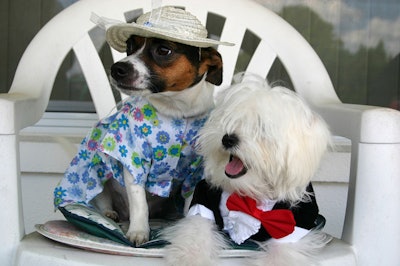
No one could argue with the fact that humanization has proven a huge boon to pet food. With most pet owners considering their pets family members – especially in developed markets – humanization has been a significant driver behind the industry’s ongoing success, moving beyond trend status to a foundational force.
Yet can it go too far? Many industry experts and veterinarians would say, yes, it can – and has.
Dogs and cats are not little people
During Petfood Forum 2019, a panel discussion focused on science versus marketing in pet food product development and the danger in letting the latter drive development at the expense of sound science on pets’ nutritional requirements. As in other conference sessions, the need to better educate consumers about pet food and nutrition arose. Panelist Nicolas Nolf, founder and president of Atavik pet food company, thinks that need goes further: Owners need to better understand their pets in general, including their behavior, instincts and other unique characteristics, he said.
Another panel member echoed those comments. Serge Boutet, agronomist and owner of SB Nutrinnov Consultants, said he often consults with start-up pet food and treat companies or human food companies seeking to enter the pet food market. “I always start by telling them, remember, dogs and cats are not little people. They are animals,” he said. “There are things that are dedicated for them and need to be for them.”
In fact, all the panelists agreed that, while human food trends have driven consumer demands and pet food product development for some time now, what’s good for humans isn’t always good for dogs and cats. An example that comes to mind is the consumer demand for higher-protein human foods and beverages that has permeated pet food for several years, bolstered by the perception among some pet owners (and, let’s face it, encouraged by some pet food brands) that dogs and cats should be fed “as they would eat in the wild.”
For people, such high-protein items are typically just one component of a varied, (ideally) balanced diet. Yet with pets, their pet food is all they get – and with high-protein products typically being very calorically dense, the pets often get too much of them because their owners may not understand the proper portions to feed, contributing to the pet obesity problem. (Katy Nelson, DVM, the opening keynote speaker for Petfood Forum, even challenged the industry to “re-evaluate extremely calorically dense foods.”)
Humanization in pet nutrition mirrors pet behavior issues
This concept of human nutrition trends and needs possibly being misapplied to pets reminds me of decades-long efforts by animal behaviorists, veterinarians and other pet experts trying to help pet owners deal with pet behavioral issues by getting them to understand that – again – dogs and cats are not small people. We cannot expect them to think or act the same way we would or expect other people to.
For dogs, olfaction is their “primary modality,” or way of interacting with the world, compared to us humans, who are visual, according to Alexandra Horowitz, Ph.D., a professor at Barnard College who researches dog olfaction and behavior. “If we want to understand how dogs think, we need to understand their sense of smell,” she said in a presentation at Royal Canin’s Future of Animal Companionship Conference in October 2018 in Paris.
Fascinatingly, her research has shown that dogs’ sense of smell is so acute and complex, they can even “smell through times,” detecting not only past odors plus future ones coming on the breeze. More pertinent, her research also demonstrates that many behavior “problems” can be explained by this drive to smell, which owners inadvertently block or fail to encourage. (For example, a dog jumping up on a person is its way of trying to smell the person’s face or breath.)
As for cats, they are also more olfactory, at least in terms of how they communicate, as well as using body language and vocalizations to express themselves. Sarah Heath, BVSc, a certified animal behaviorist and external lecturer in small animal behavioral medicine at Liverpool University, who co-presented with Horowitz, said that perceived behavior problems arise with cats because their social behavior and ways they express emotions are very different than that of people and dogs.
Crossing the line into anthropomorphism
These fundamental understandings about what makes dogs and cats tick is obviously relevant to how they eat and owners’ interaction with them around feeding and nutrition. Yet whether it’s about feeding pets or dealing with their behavior, I believe the core issue is that humanization has, in many areas, crossed into anthropomorphism.
According to Wikipedia, anthropomorphism is “the attribution of human traits, emotions or intentions to non-human entities.” The Merriam-Webster dictionary defines it as “an interpretation of what is not human or personal in terms of human or personal characteristics.” That definition goes on to give humanization as a synonym – but with pets, I’m not sure they’re necessarily the same.
I believe humanization as we most commonly understand it now – considering pets members of our families – can be very beneficial for both humans and pets. Aside from the pending long-term health threats posed by rising pet obesity, pets are living longer, healthier lives than ever, and many eat better than some people do. On the other side, a growing body of research is proving the numerous health, mental and social benefits that people experience from sharing their lives with pets.
The trick is to not slide into anthropomorphism and treat pets as if they’re miniature, furry versions of ourselves, especially when it comes to what they eat and how they behave. Though that’s a tall order: According to Wikipedia, anthropomorphism “is considered to be an innate tendency of human psychology.”

















